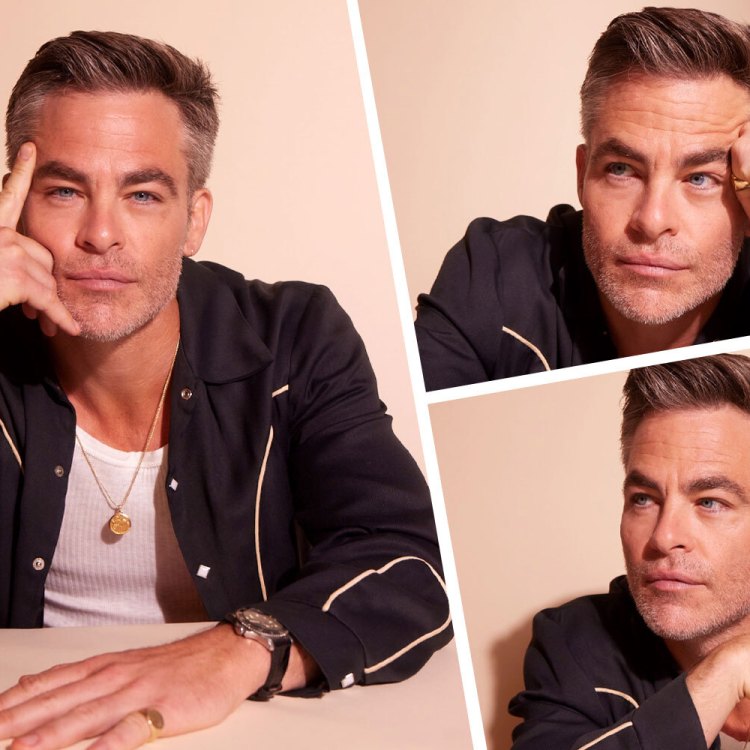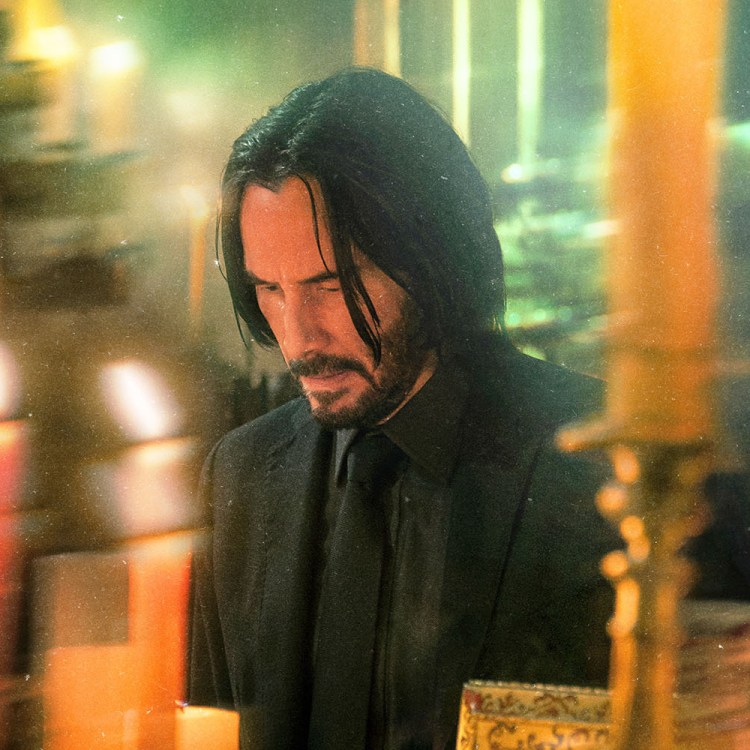You likely know filmmaker Steven Soderbergh—he won an Oscar for directing Traffic and his hits range from Erin Brockovich to Magic Mike—but may be less familiar with Peter Andrews and Mary Ann Bernard.
Their collaborations with Soderbergh include Golden Globe-winning Behind the Candelabra. HBO’s Liberace bio earned Andrews an Emmy nod for his cinematography and Bernard took home a trophy for her editing. (Much as Steven did for his direction.)
These talented individuals work exclusively with Soderbergh, which becomes a bit less surprising when you learn that the duo doesn’t exist apart from him.
Or, technically, exist at all.
Yes, Peter and Mary Ann are just Soderbergh by other names. (Sweetly, they’re a tribute to his parents: “Peter Andrews” combines his father’s first and middle names and “Mary Ann Bernard” is his mother’s maiden name.)
Why did Soderbergh create these pseudonyms? (And why is he potentially spawning even more of them today?) Ahead of the opening of his new film with Channing Tatum and Daniel Craig, RCL attempts to answer what author Paul Buhle termed “questions not to be asked” posed by the show business tradition of fake names. Find out why they’ve been so popular throughout Hollywood history, enabling artists to do everything from survive the blacklist to earn Academy Award nominations for their pets.
Conceal problematic pasts. Many a star has mused: My birth name isn’t going to look great on a marquee. (And thus “Marion Morrison” became “John Wayne.”)
Sometimes, however, names needed to be changed because there was something to hide—particularly in film’s early days when TMZ was decades away and it was still possible to run from the truth.
A notorious example of this practice was discovered in 1922 with the murder of the director William Desmond Taylor, who’d helmed dozens of movies. While Taylor’s killing was never officially solved, investigators learned his real name was William Cunningham Deanne-Tanner. Deanne-Tanner had been married with a child in New York when he vanished in 1908. His wife had no idea of his whereabouts until she happened to spot him while watching a movie in 1919 and learned his new identity/profession in the credits.
Of course, sometimes identities were impossible to escape. Take Roscoe “Fatty” Arbuckle. In 1921, the comic actor was arguably the biggest star in film, earning millions. Then he was charged with manslaughter in the death of 25-year-old actress Virginia Rappe. After two deadlocked juries, he was acquitted in a third trial as the jury required only five minutes to assert that Arbuckle had suffered a “great injustice.”
Arbuckle was still banned by industry censor Will Hayes from appearing on screen. He spent the rest of his life directing under the name “William B. Goodrich”—when “rich” is dropped, the pseudonym sends a less-than-subtle message about Arbuckle’s intention to behave. Arbuckle died of a heart attack in 1933 at 46.
Survive the blacklist. In the 1940s and ’50s, entertainment professionals believed to have Communist ties or sympathies often wound up banned from the film industry. Paul Buhle’s books include Tender Comrades: A Backstory of the Hollywood Blacklist (with Patrick McGilligan) and Hide in Plain Sight: The Hollywood Blacklistees in Film and Television, 1950-2002 (with Dave Wagner). He has interviewed dozens of those individuals about their experiences.
So how did these professionals (particularly writers) continue to pay the bills?
“Fronts and pseudonyms,” Buhle told RCL. [Fronts are other writers who claimed credit for the work of the blacklisted then shared the money with them.] He noted that the work the blacklisted scribes produced included the “best two TV shows of my childhood, You Are There and The Adventures of Robin Hood.” He also pointed out that anonymity actually suited the many who “made a living as ‘script doctors,’ for which they held a rigid rule never, never to discuss what films they had doctored.”
Buhle reported that writers understandably tried to limit the number of people aware of their secret. However, he found their activities were generally known to one surprising entity: “Many writers, perhaps most, continued to use their own social security numbers for tax purposes. So the IRS knew, if it wanted to know.”
The most famous of the blacklisted writers is Dalton Trumbo, subject of 2015’s Trumbo (which brought Bryan Cranston an Oscar nod in the title role). Trumbo earned one Oscar for a front (Ian McLellan Hunter for Roman Holiday in 1954) and a second under a pseudonym (Robert Rich for The Brave One in 1957).
Other blacklisted writers include Abraham Lincoln Polonksy (subject of a biography co-written by Buhle) and Robert Lees, who Buhle reported “enjoyed making up funny British aristocratic names for scripts for The Adventures of Robin Hood.”
Allow for adult activities. In the 1970s, there was a moment it seemed pornographic films would go fully mainstream. 1972 blue film Deep Throat’s earnings have been estimated as high as $600 million. (There is debate about this figure, but even the lowest estimates suggest Throat cleared $100 million on a budget of just $25,000.) Suddenly, porn was a valid source of employment… but not one people exactly wanted to list on their resumes.
The result was filmmakers taking a path like Radley Metzger. Metzger’s debut film Dark Odyssey earned a positive review in the New York Times in 1961, which asserted Metzger and his co-director “rate an A for effort and a solid B for their first feature.”
By the 1970s, however, Metzger had morphed into “Henry Paris.” His hardcore films included 1976’s The Opening of Misty Beethoven. Based on George Bernard Shaw’s Pygmalion, its filming locations included New York City, Paris and Rome. It dominated the Adult Film Association of America Awards in 1977, with Metzger personally collecting three (including for the screenplay he attributed to “Jake Barnes”).
Yet its success was not enough to stop Metzger from wanting to be “legit.” By 1978, he resumed making non-adult films with The Cat and Canary (and started using his actual name again).
Others also developed hidden identities. For instance, Henry Paris regularly worked with a cinematographer named “Robert Rochester.” Rochester was actually Paul Glickman, who would do projects like 1976’s Pinocchio and His Magic Show under his own name, but transform into Rochester for less family friendly works like 1975’s Naked Came the Stranger.
Separate from their shame. Alan Smithee. He’s credited with creating many of the worst movies of all time. For decades, it was the name a director used when they so disapproved of a studio edit of their work that they no longer wanted their name linked with it at all. These films abandoned by their creators include 1998’s An Alan Smithee Film: Burn Hollywood Burn. In a particularly absurd twist, this satire’s director Arthur Hiller came to hate the edit so much he insisted on being billed as, yes, Alan Smithee. (This proved to be the breaking point for the Directors Guild of America, which officially retired the name.)
Of course, not all works that disgust their creators inspire contempt in others. Robert Towne (winner of an Oscar for writing the classic film Chinatown) wrote the original script of Greystoke: The Legend of Tarzan, Lord of the Apes. Greystoke proved you didn’t have to be human to make it in Hollywood. When Towne wasn’t allowed to direct the film, he gave credit for the screenplay to his dog.
Thus P.H. Vazak became the rare canine not only to have their work made into a major motion picture, but also the first to earn an Academy Award nomination for Best Adapted Screenplay.
Control the name numbers. Now we reach the reason for some of Soderbergh’s pseudonyms. Soderbergh generally directs, edits and films his movies, as well as often writes them. (More on that momentarily.) Soderbergh has said he wants to have his name appear on screen only a single time: “I think every time you put your name up there, you’re actually diluting it.”
However, the Directors, Writers, Cinematographers, and other guilds in Hollywood have rules on how credits must appear on screen. Thus Soderbergh’s request for a single credit on Traffic reading, “Directed and Photographed by Steve Soderbergh” was rejected, because the Writers Guild does not allow other credits between the ones for writer and director.
In response, Soderbergh began adopting pseudonyms, so he could be credited for all his labors yet still see his actual name appear only once. (Similarly, Joel and Ethan Coen edit their films jointly but list “Roderick Jaynes” as having done that particular labor.)
This may seem a bit silly… until you watch the opening credits for Tommy Wiseau’s The Room, the notoriously inept film that inspired the upcoming James Franco film The Disaster Artist. Take a moment to do so now.
Yes, the name “Wiseau” appears a ludicrous six different times, including on three straight cards at the end as he refuses to combine his producer, writer and director credits.
Thus Soderbergh continues to list “Peter Andrews” and “Mary Ann Bernard.” He recently made a point of insisting in an interview with The Globe and Mail this is “officially” how his work should be billed and corrected IMDb for crediting him directly.
What remains a mystery is Soderbergh’s attitude to writing credits. (After all, this is the credit right next to director.)
Soderbergh started out writing his own films, notably getting an Oscar nod for Sex, Lies, and Videotape.
He also directs films by other writers, as was the case with Magic Mike and the Ocean’s trilogy.
Then sometimes he writes screenplays but credits them to Sam Lowry, like The Underneath. (This is a reference to Jonathan Pryce’s character in the film Brazil.)
Indeed, his Logan Lucky may mark the arrival of yet another pseudonym, as the screenplay is credited to first-time writer “Rebecca Blunt.” Naturally, there is strong evidence this person does not exist. (She has been completely unavailable for interviews, which Soderbergh says is perfectly normal: “I happen to know that she’s working on something and that she’s on a deadline.”)
Leading suspects for the actual author are Soderbergh’s wife Jules Asner, Asner’s friend John Henson… and yes, Soderbergh himself.
Meaning Soderbergh may have used an incredible three different pseudonyms on Logan Lucky in addition to his actual name, proving film credits can contain as much story as an actual film.
This article was featured in the InsideHook newsletter. Sign up now.





















